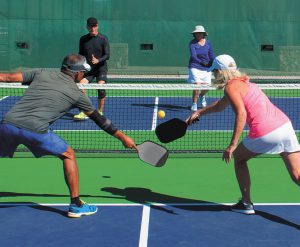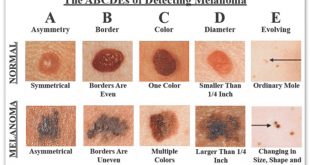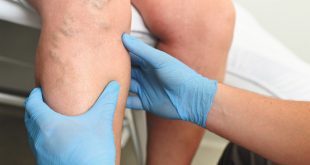 1. Ankle strain/sprain – Pickleball involves sudden movements of the feet and ankles forward, backward, and side-to-side. These movements place stress on the ligaments surrounding the ankle joint. Moving side to side can cause the most common ankle injury in Pickleball – the inversion ankle injury. This is an injury where the foot rolls under the ankle and turns under. It produces a strain/sprain to the outside ankle ligaments. The ligaments can become stretched or torn. Repetitive ankle strain/sprains can weaken the normal stability of the outside of the ankle making you prone to repetitive ankle injury. The use of a functional ankle brace that allows full natural ankle range of motion while providing support and stability to the ankle joint is helpful to use for players experiencing ankle strain/sprain. Also, it is extremely important to warm up before every game or practice. Schedule time at least 5 to 10 minutes for warm-up. Start with some easy cardio (i.e., a fast walk, jog, or bike ride) to get your core temperature up. Then, do some light stretching. After play, be sure to cool down by taking a slow walk and doing a bit of stretching too.
1. Ankle strain/sprain – Pickleball involves sudden movements of the feet and ankles forward, backward, and side-to-side. These movements place stress on the ligaments surrounding the ankle joint. Moving side to side can cause the most common ankle injury in Pickleball – the inversion ankle injury. This is an injury where the foot rolls under the ankle and turns under. It produces a strain/sprain to the outside ankle ligaments. The ligaments can become stretched or torn. Repetitive ankle strain/sprains can weaken the normal stability of the outside of the ankle making you prone to repetitive ankle injury. The use of a functional ankle brace that allows full natural ankle range of motion while providing support and stability to the ankle joint is helpful to use for players experiencing ankle strain/sprain. Also, it is extremely important to warm up before every game or practice. Schedule time at least 5 to 10 minutes for warm-up. Start with some easy cardio (i.e., a fast walk, jog, or bike ride) to get your core temperature up. Then, do some light stretching. After play, be sure to cool down by taking a slow walk and doing a bit of stretching too.
2. Achilles tendonitis – Achilles tendinitis occurs from repetitive stress to the Achilles tendon. Pain can appear anywhere along the tendon, from the calf muscle to tendon’s attachment at the back of the heel bone. Risk factors associated with Achilles tendonitis are tight calf muscles and suddenly doing activities that put extra stress on the Achilles tendon. With the physical maneuverings of pickleball, this certainly stresses the Achilles tendon. Symptoms include pain and stiffness along the Achilles tendon in the morning or after periods of sitting or rest. The pain at the back of the heel worsens with activity and swelling can occur. Treatment of Achilles tendon strains includes rest, focused stretching of the tendon before/after activities, and eccentric loading exercises.
3. Achilles tendon tear – Achilles tendon rupture can be a complete or partial tear. This happens when the tendon is stretched beyond its ability. This can occur with a forceful and abrupt downward (plantarflexion) movement of the ankle. The Achilles tendon can also be torn when there is sudden forceful pivoting or sudden acceleration in running. This may occur during falling or tripping which, is quite common in “weekend warrior” pickleball players. Many patients describe a snapping sensation with a sudden pain in the back of the ankle or calf. Pain is severe in the back of the ankle and usually there is difficulty to bear weight on the affected foot/ankle. With a complete rupture of the tendon, most cannot flex their foot downward from the ankle. This type of injury will often require surgical repair. Prompt evaluation is imperative for optimal long-term outcome.
4. Plantar fasciitis/heel bruise – Plantar fasciitis and heel bruising will result from overuse or repetitive pounding on the hard playing surface. Pain can be in the arch area or bottom of the heel. Often, it is in both areas. Pain is sharp in nature to the bottom of the heel and often more painful after inactivity or rest. This is often treated with activity modification, rest, stretching, intrinsic foot exercises, and potentially shoe orthotics or heel cups.
5. Blisters – Blistering of the foot is usually associated with prolonged use of improper footwear and socks. Wear anti-friction socks. Make sure your shoes fit properly. You should NOT be using regular walking or running shoes on a pickleball court. These types of shoes only provide traction when you are moving in a straight line. Pickleball involves fast and frequent side to side movements. Wearing these types of shoes can cause the foot to “stick” and an injury will likely occur. Court shoes are made with a smoother and rounder sole. They do not have deep treads on their sole. The treads are also smaller and closer together than other types of shoes. These court shoe modifications allow you to move and glide on the court.
Lakeside Foot & Ankle Center
Podiatrists in Leesburg and The Villages, Florida
Our practice provides superior foot and ankle care for every walk of life using state of the art and time proven diagnostic and therapeutic techniques. We believe that prevention, prompt diagnosis, and early intervention are the key ingredients to minimize the impact of any problem on your life. We provide the full range of podiatric care, exhausting all conservative treatment options prior to graduating to surgical intervention when necessary. Our board-certified physicians are well versed in the arena of podiatric medicine and provide skilled and compassionate surgical care.
Lakeside Foot & Ankle Center offers a full array of podiatric services to help you maintain healthy feet.
Contact us to day to schedule your appointment.
The Villages
352.259.0854
Leesburg
352.728.1252
Disclaimer: This content is not intended to be a substitute for professional medical advice, diagnosis, or treatment. Always seek the advice of your physician or other qualified health care provider with any questions you may have regarding a medical condition.
 Central Florida Health and Wellness Magazine Health and Wellness Articles of the Villages
Central Florida Health and Wellness Magazine Health and Wellness Articles of the Villages



